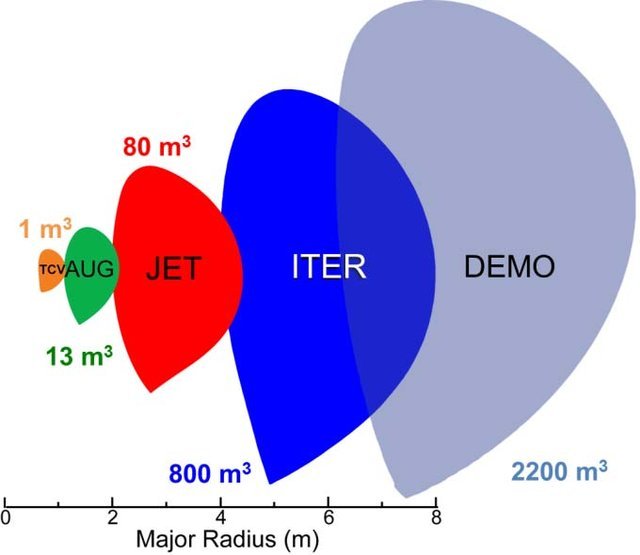[NF.14] Magnetic Confinement Fusion - where are we
As I promised, text for this week is present status of magnetic confinement fusion (MCF)...
The article will enlist the largest modern MCF machines and end with some scientific status up to date.
Where are the Main "Players"?
One could say that the main players are members of the largest fusion project - ITER. The parties are EU, Russia, USA, China, India, Japan, and S. Korea.
However, presently, Russia does not have a serious magnetic fusion device, even though tokamak was invented there. What they are the best in are auxiliary technologies such as heating, diagnostics and tritium breeding.
Also, I would exclude India as a serious player as they are very fresh in the story. But they do invest a lot, due to the energy issues they are encountering in the transition towards a developed country.
Superconductivity in Asia
All 3 new ITER-relevant machines that emerged at the beginning of 21st century in Asia are superconducting. Namely, those are EAST in Chine, K-STAR in S. Korea and SST-1 in India.
"Quality" of SST-1 website and the fact that it is archived can tell you a lot about Indian seriousness about those projects...
Beside new machine, Japanese largest tokamak JT-60U is being upgraded to JT-60SA which will also be fully superconducting tokamak.
Upgrades in EU
In contrary to Asia, Europe did not make any new machine in the 21st century. But what they did in the last decade was upgrading machines from the 1990s. Namely, Tore Supra from France became WEST, MAST from the UK is now MAST-Upgrade and TCV from Switzerland has been significantly improved.
It is interesting that some machines, like Asdex-Upgrade, were built as a brand new machine. But instead of naming it Asdex 2, they added the word "Upgrade". I find this "EU fusion-engineer" logic very strange...
However, the stellarator community took an effort to make a new machine in EU for the 21st century. And not any machine - it is now the largest stellarator in the world. It is called Wendelstein 7X. Angela Merkel pushed the button for its start :D
Rest of the World
Besides the aforementioned ITER parties, there are 2 associate partners: Australia and Iran (the latter one joined when they got OKish with the USA in 2016).
The USA was mentioned as the main player, but their policy is quite moody. They were going out from ITER once and considering it two more times. Also sometimes they boost fusion research and then cancel the funding in 5 years. One of the most important tokamak, an Alcator C-Mod in MIT, was shut-down recently.
Good news is that they continued with the upgrade of their spherical tokamak NSTX in Princeton.
Size matter
I was mentioning that the larger tokamaks got better results, as size does matters.
However, size does not only matter through historical development but also for the future. Bellow you can see present machines (TCV, Asdex-Upgrade, and JET) in comparison to future experiment ITER and power-plant DEMO:

Source: ResearchGate
The different scales help with up-scaling towards larger machines. It helps from a design perspective for engineers and from performance expectation perspective for scientists.
Fusion product stagnation, but...
Unfortunately, MCF fusion product is stagnating now for more than 20 years. Since JET big success in 1997.
But in the meantime, MCF learned better some physical and engineering aspect that was unknown in the time of the first ITER design. So the fusion community is more and better prepared for running such a large and expensive machine.
For example, design of tritium breeders is much better now. Interation between plasma and chamber is better understood. And crucial plasma instabilities are being explained.
Next topic: plans of ICF, i.e. future after present.
Please feel free to ask anything in the comments. I will either try to answer you in the comment or even make the new post.